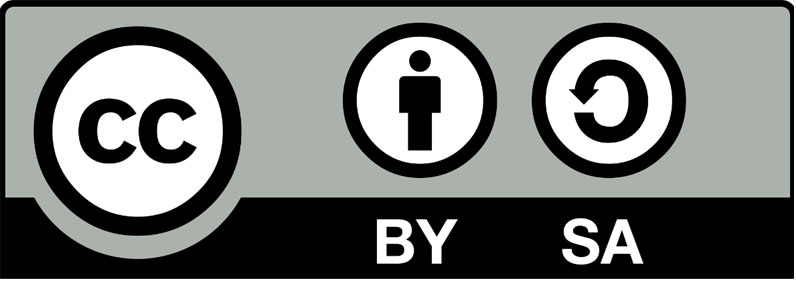INTEGRATION, RELATION, AND RECREATION: RETHINKING ARCHITECTURAL PROGRAMMING
Abstract
This study rethinks architectural programming as an innovative process, emphasizing the integration of contextual elements, the relational blending of multiple functions, and the adaptive reuse of existing spaces as recreation over time. Moving beyond the traditional understanding of programming as problem-finding-solving, this research redefines it as a dynamic framework bridging theoretical insights and practical design applications. Through a qualitative case study methodology, the paper examines three landmark projects with similar functions by Bjarke Ingels Group—8 House, The Mountain, and Urban Rigger—to explore the transformative potential of programming. The analysis positions programming as an integrative tool that aligns spatial, functional, and contextual dynamics to address both immediate and future architectural challenges. Program mixing with relational functions is conceptualized as a strategic approach that harmonizes diverse functions within a single design, fostering innovative and hybrid solutions. Adaptive reuse, reframed as a multi-time design response, focuses on revitalizing existing structures to meet evolving societal and environmental needs. These case studies illustrate how programming establishes a dynamic framework that enables architects to creatively reimagine constraints as opportunities. By emphasizing the principles of design analysis—realization, organization, and integration—this research contributes to the discourse on programming as a catalyst for architectural innovation and transformation. It proposes a shift in practice that highlights programming as a generative and responsive framework, inspiring a rethinking of architectural methodologies in the face of contemporary challenges.
Keywords
Full Text:
PDFReferences
House / BIG | ArchDaily (no date). Available at: https://www.archdaily.com/83307/8-house-big (Accessed: 31 March 2025).
Agrest, D. (1977) ‘Design versus non-design’, Communications, 27(1), pp. 79–102. Available at: https://doi.org/10.3406/comm.1977.1410.
Alexander, C. (1964) ‘Notes on the Synthesis of Form’, in.
Andaloro, Bianca et al. (2022) ‘Adaptive public spaces’.
Anders, P. (2003) ‘Towards Comprehensive Space: A context for the programming/design of cybrids’.
Andreu, I.C. and Oreszczyn, T. (2004) ‘Architects need environmental feedback’, Building Research & Information, 32(4), pp. 313–328. Available at: https://doi.org/10.1080/09613210410001679857.
Barekati, E., Clayton, M.J. and Yan, W. (2015) ‘A BIM-Compatible Schema for Architectural Programming Information’, in, pp. 311–328. Available at: https://doi.org/10.1007/978-3-662-47386-3_17.
Burry, M. (2011) Scripting cultures: Architectural design and programming. John Wiley & Sons.
Caetano, I., Santos, L. and Leitão, A. (2020) ‘Computational design in architecture: Defining parametric, generative, and algorithmic design’, Frontiers of Architectural Research, 9(2), pp. 287–300. Available at: https://doi.org/10.1016/j.foar.2019.12.008.
Chaillou, S. (2022) Artificial intelligence and architecture: from research to practice. Birkhäuser.
Cherry, E. (1998) Programming for design: From theory to practice. John Wiley & Sons.
Cherry, E. and Petronis, J. (2009) ‘Architectural programming’, Whole building design guide [Preprint].
Clark, H. (2009) Design Studies: A Reader. Oxford New York: Berg.
Coates, P. (2010) Programming. architecture. Routledge.
Creswell, J. (2018) Qualitative inquiry & research design : choosing among five approaches. Thousand Oaks, California: SAGE.
Groat, L. and Wang, D. (2013) Architectural Research Methods.
Gropius, W. (1965) The new architecture and the Bauhaus. London: Faber and Faber.
Hershberger, R. (2015) Architectural programming and predesign manager. Routledge.
Jin, S. and Tu, H. (2024) ‘Current status and research progress in architectural programming: A comparative analysis between China and other countries’, Frontiers of Architectural Research [Preprint], (xxxx). Available at: https://doi.org/10.1016/j.foar.2024.07.010.
Jones, J.C. (1992) Design methods. John Wiley & Sons.
Koolhaas, R. et al. (2006) ‘2 Architects 10 Questions on Program’, PRAXIS: Journal of Writing+ Building, (8), pp. 6–15.
Lucas, R. (2016) Research methods for architecture. Hachette UK.
McMorrough, J. (2006) ‘Notes on the Adaptive Re-use of Program’, Praxis: Journal of Writing+ Building, (8), pp. 102–110.
Mountain Dwellings / PLOT = BIG + JDS | ArchDaily (no date). Available at: https://www.archdaily.com/15022/mountain-dwellings-big (Accessed: 31 March 2025).
Oxman, N. (2012) ‘Programming matter’, Architectural Design, 82(2), pp. 88–95.
Plowright, P.D. (2014) Revealing architectural design: Methods, frameworks and tools, Revealing Architectural Design: Methods, Frameworks and Tools. Available at: https://doi.org/10.4324/9781315852454.
Powers, M. (2007) ‘Toward a discipline-dependent scholarship’, Journal of Architectural Education, 61(1), pp. 15–18. Available at: https://doi.org/10.1111/j.1531-314X.2007.00122.x.
Redyantanu, B.P. (2023) ‘Fleksibilitas Dan Adaptabilitas Ruang DomestikBerbasis Arsitektur Keseharian’, Idealog: Ide dan Dialog Desain Indonesia, 8(1), p. 14.
Robinson, J.W. and Weeks, J.S. (1983) ‘Programming as design’, Journal of Architectural Education, 37(2), pp. 5–11.
Sanoff, H. (2016) Methods of Architectural Programming (Routledge Revivals). Routledge. Available at: https://doi.org/10.4324/9781315541877.
Schön, D.A. (1988) ‘Designing: Rules, types and words’, Design Studies, 9(3), pp. 181–190. Available at: https://doi.org/10.1016/0142-694X(88)90047-6.
Steenson, M.W. (2022) Architectural intelligence: How designers and architects created the digital landscape. mit Press.
Summerson, J. (1957) ‘The case for a theory of modern architecture’, RIBA Journal, 64(8), pp. 307–313.
Till, J. (2012) ‘Is doing architecture doing research?’, 4IAU 4a Jornadas Internacionales sobre Investigación …, pp. 1–9.
Urban Rigger / BIG | ArchDaily (no date).
Verbeke, J. (2013) ‘This is research by design’, in Design research in architecture. Routledge, pp. 137–160.
Vesselov, S. and Davis, T. (2019) Building Design Systems. Springer.
Vidler, A. (1996) ‘The Third Typology’, in Theorizing A New Agenda for Architecture: An Anthology of Architectural Theory 1965-1995. Princeton Architectural Press, p. 258.
Vidler, A. (2003) ‘Toward a theory of the architectural program’, October, (106), pp. 59–74.
Zevi, B., Gendel, M. and Barry, J.A. (1957) ‘Architecture as Space. How to look at Architecture’, Journal of Aesthetics and Art Criticism, 16(2).
Zhuang, W. et al. (2023) ‘Research on the frontier trend of architectural programming and post-occupancy evaluation intelligent technology’, SCIENTIA SINICA Technologica, 53(5), pp. 704–712. Available at: https://doi.org/10.1360/SST-2022-0370.
DOI: http://dx.doi.org/10.12962%2Fj2355262x.v24i1.a22771
Refbacks
- There are currently no refbacks.
Indexing and Abstracting :

Journal of Architecture & Environment is licensed under a Creative Commons Attribution-ShareAlike 4.0 International License








